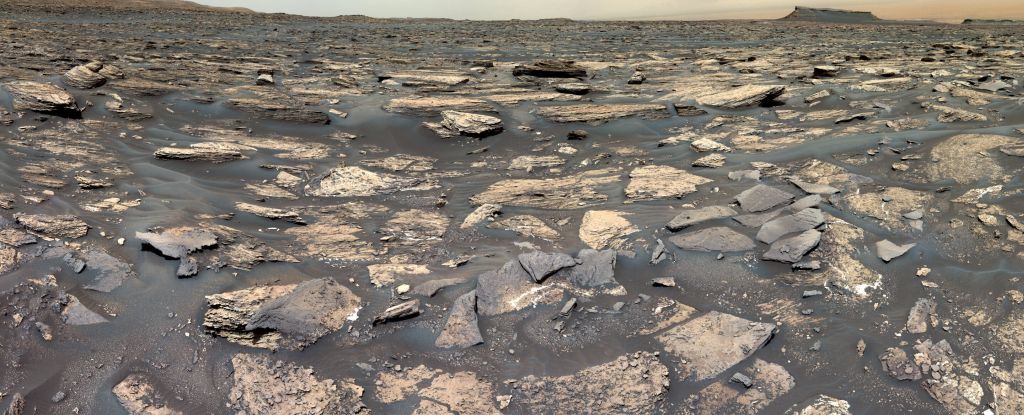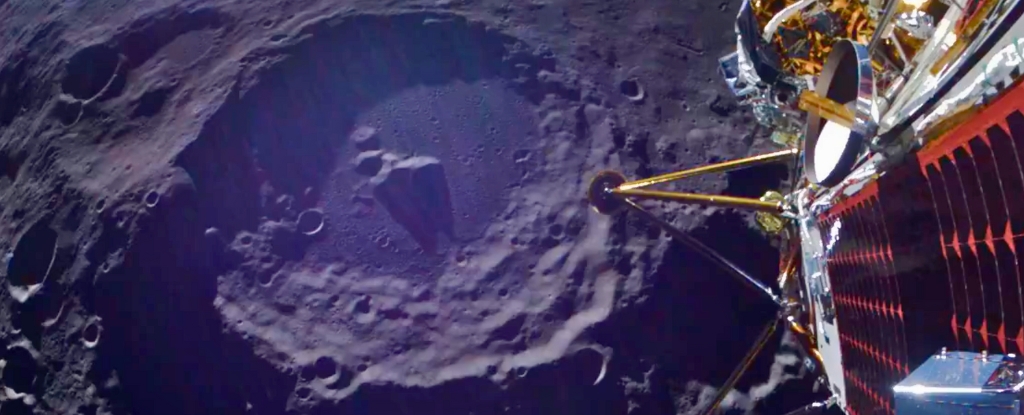Rocks scrutinized by the Curiosity rover in an ancient, long-dried lakebed on Mars have revealed conditions likely to have been habitable, billions of years ago.
There, in rocks on the Gale Crater, Curiosity has found a surprising amount of manganese oxide – a mineral that is commonly found in lakes on Earth due to the highly oxidating conditions therein, which causes manganese crystals to form in the presence of oxygen.
Its discovery on Mars in such great quantities suggests that perhaps similar conditions persisted in the Gale Crater, when it was filled with water in eons past.
“On Earth, these types of deposits happen all the time because of the high oxygen in our atmosphere produced by photosynthetic life, and from microbes that help catalyze those manganese oxidation reactions,” explains geochemist Patrick Gasda of Los Alamos National Laboratory.
“On Mars, we don’t have evidence for life, and the mechanism to produce oxygen in Mars’s ancient atmosphere is unclear, so how the manganese oxide was formed and concentrated here is really puzzling. These findings point to larger processes occurring in the Martian atmosphere or surface water and show that more work needs to be done to understand oxidation on Mars.”
Manganese oxide is common and abundant here on Earth, and intricately involved in biological processes to boot. It is an essential mineral for several human biological processes, but pretty much all life on Earth requires manganese for some reason or another.
There are even bacteria that rely on the oxidation states of manganese for energy, and their presence can accelerate the oxidation process.
There isn’t a lot of oxygen floating around on Mars now, and we’ve certainly found no evidence of living bacteria, so exactly how the manganese came to be hanging around there in sedimentary rocks on shoreline deposits in quantities comparable to an Earth-like environment isn’t clear.
Gasda and his colleagues made a careful study of the manganese as analyzed by Curiosity’s ChemCam, which uses a laser to vaporize minerals and then analyzes the light to determine their composition. Then, the researchers explored different mechanisms for the precipitation of manganese in the Gale Crater lake: precipitation from lakewater, or from groundwater through porous sands.
All mechanisms require the presence of highly oxidizing conditions, and after running through the options, the researchers concluded that the most likely scenario would have been the precipitation of manganese oxides along a lakeshore in the presence of an oxygen-rich atmosphere.
This is further evidence, they say, of a long-lived and habitable lake environment in the ancient Gale Crater on Mars, since it can take thousands of years for manganese oxide to form, depending on oxygen levels.
Where that oxygen came from is another question that remains unanswered, although it’s possible that meteorite impacts early in Mars’s history could have released oxygen from surface ice deposits.
Nevertheless, the findings offer a tantalizing prospect for looking for traces of ancient life on the red planet. Microbe-mediated oxidation may have left biosignatures and organics in the manganese-bearing rocks. Perseverance, which is currently exploring a dried-up delta environment, could look for these in its travels, the researchers say.
“The Gale lake environment, as revealed by these ancient rocks, gives us a window into a habitable environment that looks surprisingly similar to places on Earth today,” says planetary scientist Nina Lanza of Los Alamos National Laboratory.
“Manganese minerals are common in the shallow, oxic waters found on lake shores on Earth, and it’s remarkable to find such recognizable features on ancient Mars.”
The team’s research has been published in the Journal of Geophysical Research: Planets.





